Three art installations now on view at Harvard under the collective title "The Divine Comedy" are attracting attention, including an article in the Boston Globe by architecture critic Robert Campbell ’58, M.Arch. ’67, and this admiring description in New Scientist. In a quadrangle on Oxford Street at the Northwest Science Building stands Untitled, by dissident Chinese artist Ai Weiwei, a global figure in the art world who was arrested on April 3 and whose whereabouts are currently unknown. It comprises nine large piles of children's backpacks—5,335 in all—each pack representing a child killed in a 2008 earthquake in China. There is also an audio track reciting the name of each child. Three to now, by Berlin-based Danish/Icelandic artist Olafur Eliasson, on the ground floor gallery of Gund Hall, includes 54 objects that invite the visitor to interact with them and play on our visual and spatial perceptions, like a convex mirror that inverts images. Cloud City, a large transparent balloon with solar panels (that power four tiny LED lights) inside, by Argentina native Tomás Saraceno, is on a roof terrace at the Carpenter Center. The Graham Gund Exhibition Fund underwrote the exhibition, which was mounted by the Graduate School of Design and the Harvard Art Museums. It runs until May 17.
Art installations at Harvard by Ai Weiwei, Olafur Eliasson, and Tomás Saraceno
Art installations at Harvard by Ai Weiwei, Olafur Eliasson, and Tomás Saraceno
Three unusual art installations at Harvard by Ai Weiwei, Olafur Eliasson, and Tomás Saraceno
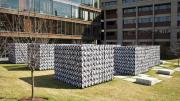


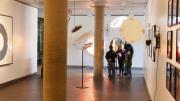
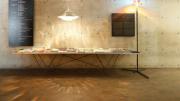
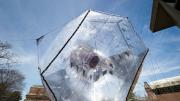

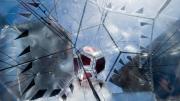
You might also like
Novelist Lev Grossman on Why Fantasy Isn’t About Escapism
The Magicians author discusses his influences, from Harvard to King Arthur to Tolkien.
This TikTok Artist Combines Monsters and Mental Heath
Ava Jinying Salzman’s artwork helps people process difficult feelings.
Rachel Ruysch’s Lush (Still) Life
Now on display at the Museum of Fine Arts, a Dutch painter’s art proved a treasure trove for scientists.
Most popular
Explore More From Current Issue

Introductions: Dan Cnossen
A conversation with the former Navy SEAL and gold-medal-winning Paralympic skier

This TikTok Artist Combines Monsters and Mental Heath
Ava Jinying Salzman’s artwork helps people process difficult feelings.





